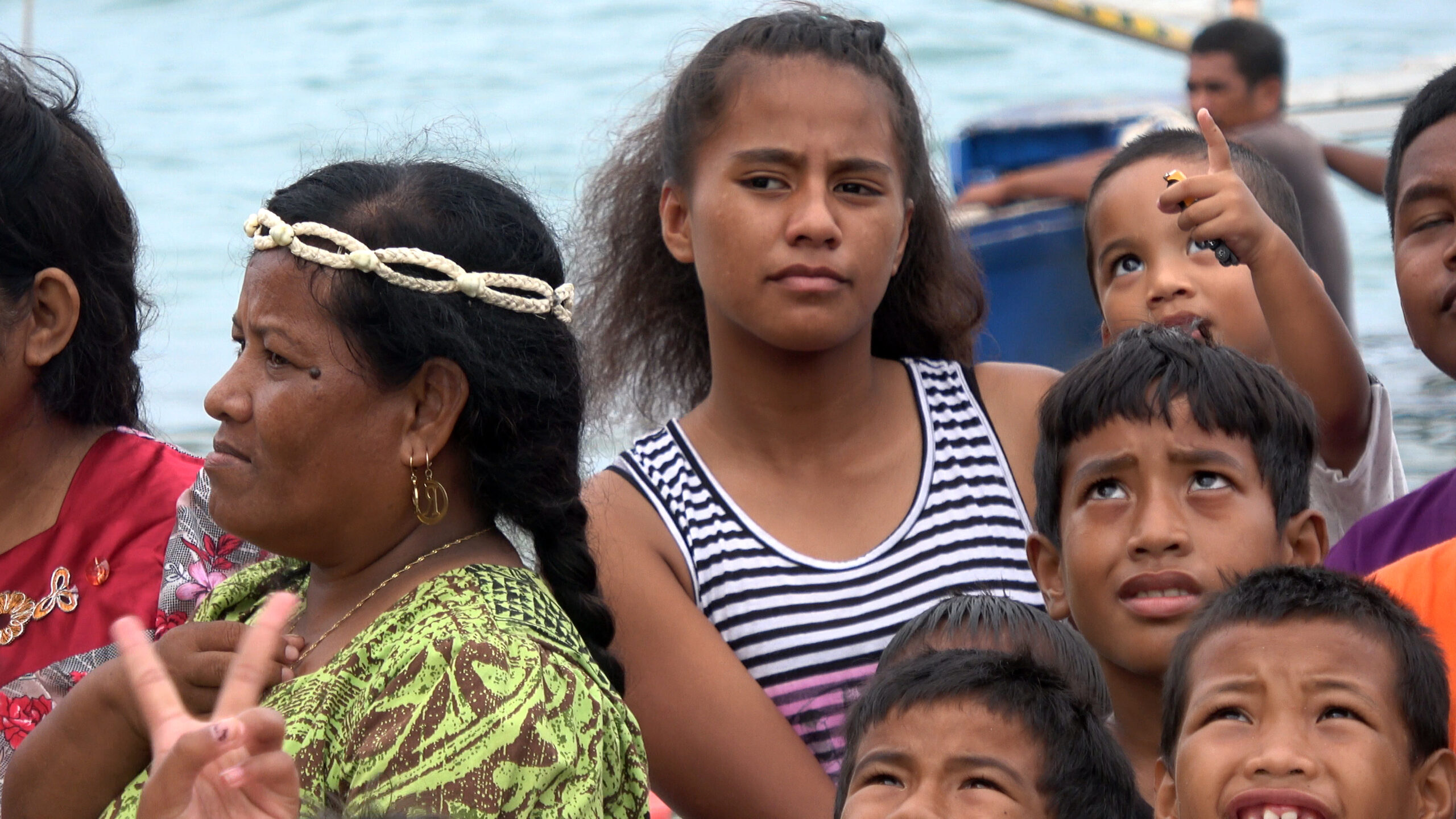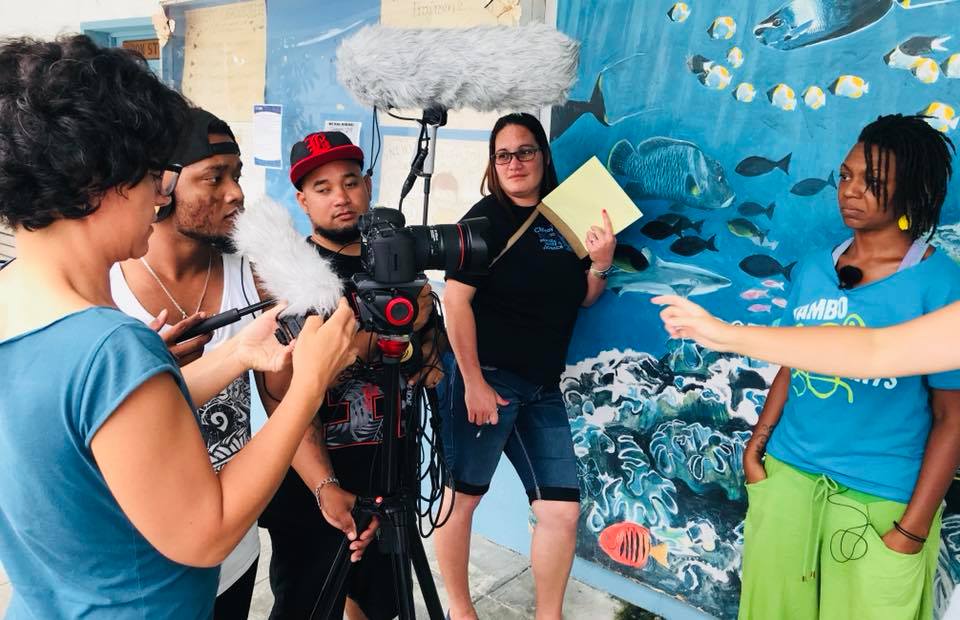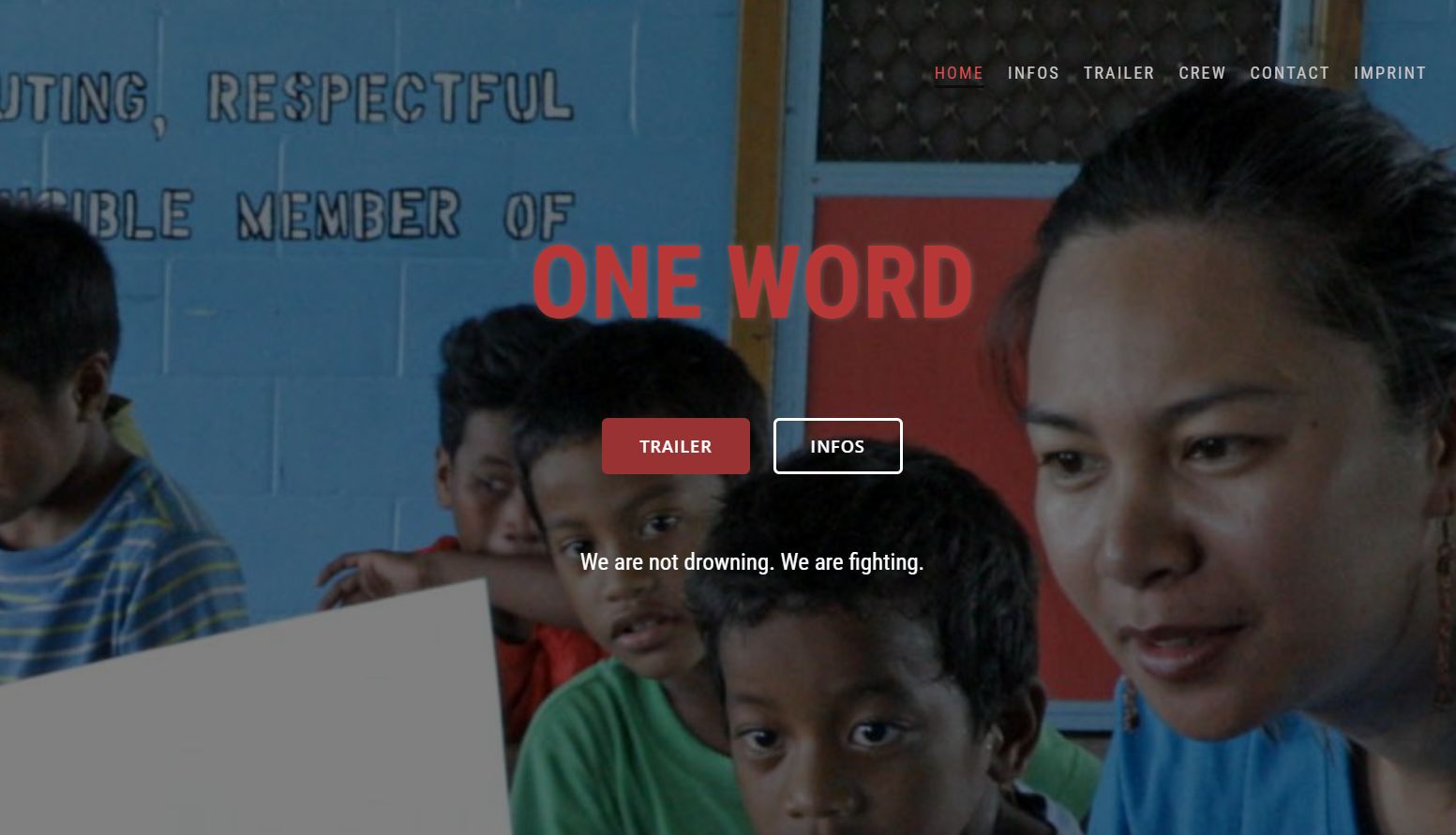We have given our film “One Word” its own website, which you can reach at this link: one-word-the-movie.com
What we need
The music of our film One Word comes from pretty much from everywhere in the world, including bands like “Radiohead” and “Jethro Tull”. But of course there is also music from the Marshall Islands in One Word. The young guys in the video are also in the film. Christina Schulze met them spontaneously on the island of Ebeye when she had nothing else with her than a small handheld camera with a moderate automatic focus, but with a very good microphone. When we first heard this material in the editing room, we were completely blown away. Do you feel the same?
The last verse is: “Men eo jej aikuiji ej kejatdridrik”. It means: “What we need is hope.”
(English below) (Castellano abajo)Die Musik unseres Filmes „One Word“ stammt so ziemlich von überall her auf dem Globus, darunter Bands wie „Radiohead“ und „Jethro Tull“. Aber natürlich gibt es in „One Word“ auch Musik von den Marshall Islands. Die Jungs im Video sind auch im Film dabei. Christina Schulze hat sie spontan auf der Insel Ebeye getroffen, als sie gerade nichts Anderes dabei hatte, als eine kleine Handkamera mit einer mäßigen Schärfeautomatik, aber mit einem sehr gutem Mikrofon. Als wir dieses Material das erste Mal im Schnitt hörten, hat es uns völlig umgehauen. Geht es euch auch so?The music of our film "One Word" comes from pretty much from everywhere in the world, including bands like "Radiohead" and "Jethro Tull". But of course there is also music from the Marshall Islands in “One Word”. The young guys in the video are also in the film. Christina Schulze met them spontaneously on the island of Ebeye when she had nothing else with her than a small handheld camera with a moderate automatic focus, but with a very good microphone. When we first heard this material in the editing room, we were completely blown away. Do you feel the same?La música de nuestro documental "One Word" proviene prácticamente de todo el mundo, incluidas bandas como "Radiohead" y "Jethro Tull". Pero, por supuesto, también hay música de las Islas Marshall en "One Word". Los chicos jóvenes en el video también están en la película. Christina Schulze los conoció espontáneamente en la isla Ebeye cuando no tenía nada más que una pequeña cámara de mano con un enfoque automático moderado, pero con un micrófono muy bueno. Cuando escuchamos este material por primera vez en la sala de edición, nos quedamos más que impresionados,nos encantó. ¿Sientes lo mismo? English: https://one-word-the-movie.com/ Deutsch: https://www.kameradisten.org/one-word/ Castellano: https://www.kameradisten.org/es/one-word/
Gepostet von Kameradistinnen am Donnerstag, 30. Januar 2020
“One Word” is done

As intended a cinema film has now emerged from our participatory project “withstanding the waves” about the impacts of climate change in the Pacific. We’re still working on some color corrections and some changes to the animated credits. But in principle we are through.
After we had developed the basic dramaturgy of the film with our participants on Majuro, it took us another year before the film was finished. Above all, this was due to the incredible amount of material that we brought back to Germany from the many workshops on the Marshall Islands. Almost a year of participatory filming gave us around 420 hours of material that we viewed and categorized from January 2019 until well into May. In addition, our participants from the RMI still sent us even further material via cloud.
To build bridges
The Building Bridges Festival took place on July 26-28, 2019 at Oranienplatz in Berlin. The “O-Platz”, as the people in Berlin call it, has always been a meeting place and it is a reference point for the refugee movement. Fights for the rights of refugees were taken here into a public space and some of them were won here.
This time the “O-Platz” was a festival location where women * opened the feminist perspective on “refugee issues” and led the discourse on how to build an intersectional feminism. The following video was created as part of our 140 gram concept on the sidelines of the conference with the support of the Rosa Luxemburg Foundation.
(Deutsch) Migrant voices in social media
Home
Since December 6th we are back in Germany. Our experiences in the Pacific have strongly influenced us. Did you know that the Marshallese way of saying hello has three spellings and three meanings? The “hello” of the Pacific Republic can be written as “Yokwe”, “Iakwe” or “Yakwe” and it means “hello”, but also “I love you.” Or “you are as beautiful as the rainbow is.”
Once a year
Once a year, there is a Marshallese film festival on Majuro. Among the thirteen submissions this year was a short film about “Happiness”, which the young people created from our workshop in Laura. Although it won no prize in the end, it got a thunderous applause from the audience. Here it is. “Happiness” from Laura Highschool Media Team.
A short month
Today we sent a copy of the footage from Majuro (RMI) to our production company “Studio Kalliope” in Potsdam (Germany). The little package in the video below has it all. It contains 8 hard disks, each with 5 TB of video material and audio recordings, therefore 40 TB of data and an HD proxy on two additional hard disks. If one were to watch all video recordings without interruption one after the other, one would need more than two weeks to see it all, we have calculated. The package is now on its way to Hawaii. From there it reaches a postal distribution center in the US and then it flies across the Atlantic to a cool european fall, where a DHL messenger will one gray autumn morning hand it over to Maria Kling at the garden fence. Good trip, small package! Do not get lost.
No time for writing

A lot has happened again. So much that we neglect this blog very much. By the summer of 2018, the participants in our workshops and we have shot many interviews and moods. The amount of material is enormous. We have also edited smaller film projects, some of which can (will) be found on this blog. In addition to the workshops on Majuro, Christina took over workshops on Ebeye. We were able to actively involve 75 people on the Marshall Islands in the film work, that is not counting the many advisors and helpers. That’s about 0.14 percent of the total population, but above all, there are 75 great people who contribute their experiences, perspectives and ideas to the project. (*1)
I do not want to live in another Country
September 8th is a global day to rise for climate action. Activities and demonstrations are planned in more than 70 countries to end the era of fossel fuels and building 100% renewable energy for all. In Germany alone, more than 25 events are planned.
Also here on the Marshall Islands and other Pacific Islands, they are preparing for the 8th of September. Under the slogan #RiseForClimate and #RiseForPacificPawa (“Pawa” – Pidgin English for “Power”), the many small island states unite to support each other, letting the world know: we are not drowning, we are fighting. They fight for the protection of the climate, for the survival of their islands and for their cultural identity. We filmed the preparatory meeting of the environmental organization Jo-Jikum, which is our local partner and part of the global climate movement 350.org. This year’s campaign symbol is Kikonang, a sort of palm leaf windmill. It stands for movement, for renewable energy such as wind and solar energy, for the arts and crafts, which has an important cultural significance here and many reminds them of their childhood, as it is a popular toy on the island states. It is important to tackle the climate crisis globally. There is no industry in the Marshall Islands, and people are the least polluting people due to greenhouse gas emissions. But they are at the frontlines to be affected by the impacts of climate change.
For more information visit: https://riseforclimate.org // https://350.org // https://350pacific.org




